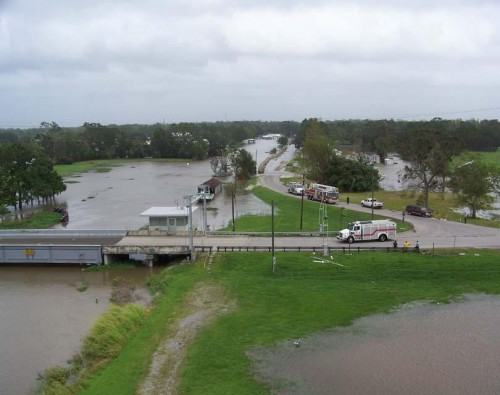"Superhero Concert" (Gray)
April 6, 2010
May 1 ballot to include 5 mill tax
April 8, 2010A volatile economy has dominated the oil and gas industries for more than a year, as the number of active rigs dropped across the nation and production slowed.
Finally, things are beginning to change. However, there are a few major roadblocks to overcome and pressing issues to contend with.
In July 2008, south Louisiana had nearly 28 rotary rigs on land, which are the most popular form of drilling rigs used today. By July 2009, the number had plummeted to a mere 10.
Inland water operations didn’t look much better, as numbers fell by 68 percent during the same one-year span. Rigs in the Gulf of Mexico were cut by 44 percent.
It was an era of “historic lows,” said Louisiana Oil and Gas Association President Don Briggs at an industry presentation Thursday. “But I think it’s going to get better.”
Unfortunately, big government could be standing in the way, arms crossed and unwilling to move.
With a recent switch to a government-controlled healthcare system, officials worry the big dogs on Capitol Hill could be wielding too much power. “…There’s nothing [the government] would love more than to be in our business,” touted Briggs. And as far as Obama’s administration: “They don’t like our industry,” he said.
While Briggs said he wasn’t aiming to bash the president, recent cuts in industry-related incentives are “…calling us out to fight,” he noted. “I do know when my industry is under attack and I do know when someone is trying to do something [bad for the industry].”
Within the 2011 budget, Obama hopes to halt five lease sales in Alaska that would provide 77 billion barrels of oil, which is three times as large as the current U.S. reserves, according to Briggs.
Obama also wants the Environmental Protection Agency (EPA) to regulate hydraulic fracturing because of the potential for environmental incidents, he said. The process involves creating small fractures in underground rock formations to enhance the retrieval of oil and natural gas.
About 80 percent of the wells drilled in the U.S. use hydraulic fracturing.
“Not one time has there been a single accident with contaminants or anything like that,” explained Briggs. “We’ve been regulating it ourselves for years. We don’t want the EPA to control our industry.”
If the EPA were to gain the reins, the group would have the authority to shut down entire operations because of any known or alleged violations, he warned. “Just by passing this one, simple measure.”
Things aren’t much better on the local level, as the climate for industry officials has soured following a series of lawsuits filed by Terrebonne Parish assessor Gene Bonvillain on the basis companies weren’t properly reporting their tax liabilities.
Instead of taking up the issue with area business owners, Bonvillain resorted to filing lawsuits, Briggs said. More than 20 companies were involved in the debacle that allegedly swindled the parish out of about $90 million in local property taxes.
After years of tussle, the suits were recently thrown out and the industry is continuing to move forward.
While oil and gas are mainstays of Louisiana, their significance is felt across the globe.
Petroleum powers about 250 million cars and trucks worldwide.
“We have to have something run these engines, and it’s not going to be wind,” touted Briggs. And rig counts across the state are starting to increase, slowly but surely.
Compressed natural gas (CNG) could also offer consumers a “green” option, as 90 percent of the rigs found in Louisiana are drilling for the increasingly popular substance. And lawmakers have recently created incentives to help promote the use of CNG, especially for area business owners.
“It’s very lucrative and possible for [people] to convert,” said Britt Dearman of Apache Corporation, a local company looking to expand natural gas use in the region.
Tax credits from the federal and state levels could offset the cost of converting a fleet of vehicles to run on CNG, officials said.
From school buses to street sweepers, natural gas is the wave of the future.
“Just about any type of vehicle has a natural gas version of it,” noted Dearman.
Although the popularity of the fuel source is growing, there are still a limited number of gas stations that offer CNG fill-ups. For businesses that house fleet vehicles, building a station is a possibility.
It could also save money, as incentives work magic: A $1 million project would run about $400,000, touted Dearman.
However, price could be the largest benefactor. From the mid-’80s through the ’90s, the price of CNG stayed relatively stable, according to officials. Because of the discovery of more natural gas, those prices will continue to remain low.
Vehicles powered by CNG also emit fewer emissions: 25 percent less carbon dioxide and 50 percent less nitrous oxide.
“A lot of people see [CNG] as green because of reduced emissions. I think politicians see this as a win-win for everybody,” said Dearman. “It’s a way we can save money and get off dependence of foreign oil.”
But while natural gas could be topping the charts 20 years from now, “…we’re way behind the rest of the world,” he claimed.










